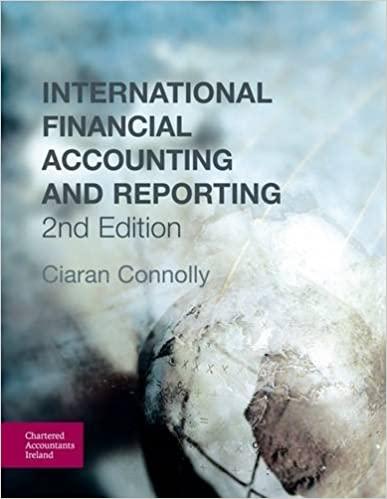Seamus plc manufactures and operates a fleet of small aircraft. It draws up its financial statements to
Question:
Seamus plc manufactures and operates a fleet of small aircraft. It draws up its financial statements to 31 March each year.
Seamus plc also owns a small chain of hotels (carrying value of €16 million), which are used in the sale of holidays to the public. It is the policy of the company not to provide depreciation on the hotels as they are maintained to a high standard and the economic lives of the hotels are long (20 years remaining life). The hotels are periodically revalued and on 31 March 2006, their existing use value was determined to be €20 million, the replacement cost of the hotels was €16 million and the open market value was €19 million. One of the hotels included above is surplus to the company’s requirements as at 31 March 2006.
This hotel had an existing use value of €3 million, a replacement cost of €2 million and an open market value of €2.5 million, before expected estate agent's and solicitor’s fees of
€200,000. The company wishes to revalue the hotels as at 31 March 2006. There is no indication of any impairment in the value of the hotels.
The company has recently finished manufacturing a fleet of five aircraft to a new design. These aircraft are intended for use in its own fleet for domestic carriage purposes.
The company commenced construction of the assets on 1 April 2004 and wishes to recognise them as fixed assets as at 31 March 2006 when they were first utilised. The aircraft were completed on 1 January 2006 but their exterior painting was delayed until 31 March 2006.
The costs (excluding finance costs) of manufacturing the aircraft amounted to €28 million and the company has adopted a policy of capitalising the finance costs of manufacturing.
the aircraft. Seamus plc had taken out a three-year loan of €20 million to finance the aircraft on | April 2004. Interest is payable at 10% per annum but is to be rolled over and paid at the end of the three-year period together with the capital outstanding. Corporation tax is 30%.
During the construction of the aircraft, certain computerised components used in the manufacture fell dramatically in price. The company estimated that at 31 March 2006 the net realisable value of the aircraft was €30 million and their value in use was €29 million.
The engines used in the aircraft have a three-year life and the body parts have an eight year life; Seamus plc has decided to depreciate the engines and the body parts over their different useful lives on the straight line basis from 1 April 2006. The cost of replacing the engines on 31 March 2009 is estimated to be €15 million. The engine costs represent thirty per cent of the total cost of manufacture.
The company has decided to revalue the aircraft annually on the basis of their market value. On 31 March 2007, the aircraft have a value in use of €28 million, a market value of €27 million and a net realizable value of €26 million. On 31 March 2008 the aircraft have a value in use of €17 million, a market value of €18 million and a net realizable value of €18.5 million. There is no consumption of economic benefits in 2008 other than the depreciation charge. Revaluation surpluses or deficits are apportioned between the engines and the body parts on the basis of their year end carrying values before the revaluation.
Requirement
(a) Explain how the hotels should be valued in the financial statements of Seamus plc on 31 March 2006 and explain whether the current depreciation policy relating to the hotels is acceptable under IAS 16 Property, Plant and Equipment.
(b) Show the accounting treatment of the aircraft fleet in the financial statements on the basis of the above scenario for the financial years ending on:
(i) 31 March 2006;
(ii) 31 March 2007 and 2008;
(iii) 31 March 2009 before revaluation.
(c) Discuss the economic consequences of asset revaluations.
Step by Step Answer:

International Financial Accounting And Reporting
ISBN: 9780903854726
2nd Edition
Authors: Ciaran Connolly





